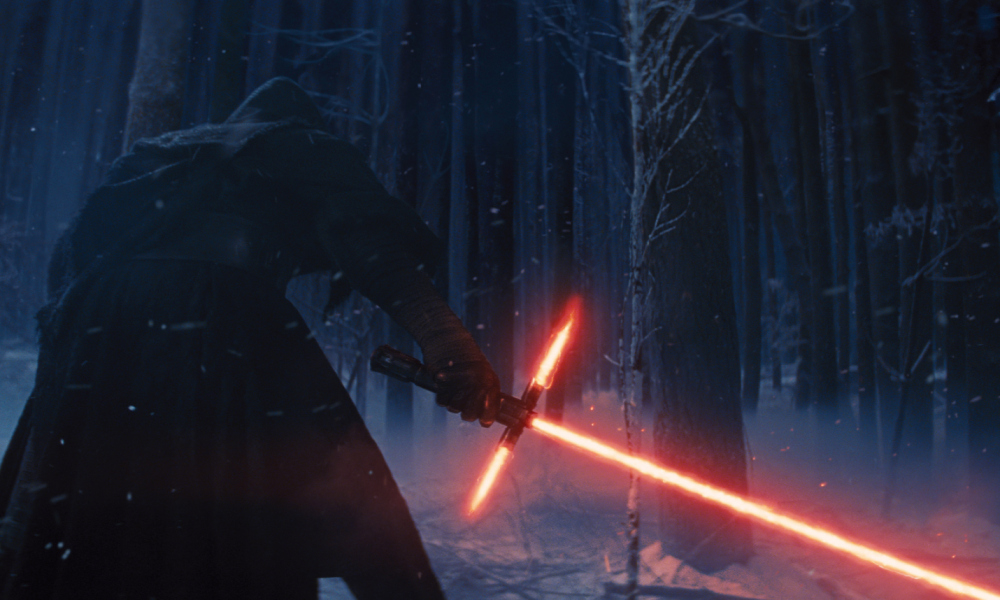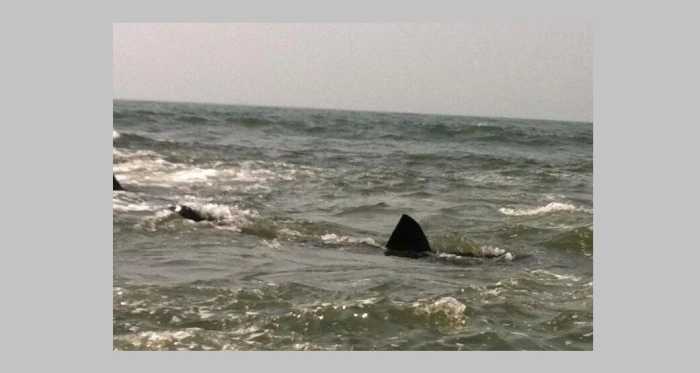As of Thursday evening, few Darth Vaders, Princess Leias, Chewbaccas, or any new Star Wars characters’ costumes reveled with flashing lightsabers or blasters in the darkness of movie theaters nationwide. Many theater chains had restricted face coverings and simulated weapons for the public’s safety. But then Lucasfilm’s logo flashed, fans held their breath, and John Williams’ epic score ignited an explosive cheer not heard in a long time.
Star Wars was back.
Millions of wannabe Jedi, Sith, and scoundrels of all ages were immersed in real sets and practical effects – something notably absent in the Star Wars prequels (1999-2005) – in a galaxy far, far away, set thirty years after the events in Return of the Jedi (1983).
For the saga’s seventh installment, The Force Awakens, the director J.J. Abrams passed the torch (lightsaber, actually) to a new generation of characters.
Rey (Daisy Ridley) was a scavenger, hollow on the inside – unfulfilled – but wore a tough exterior, like the crashed starships she frequented. Finn (John Boyega) was a stormtrooper whose life literally came crashing down after he went AWOL. And Poe Dameron (Oscar Isaac) was an X-Wing pilot who totally got cocky.
Abrams and his new lead trio didn’t change the way we look at movies, but instead helped legions of new youth take their first steps into a larger world, and restored Star Wars’ ineffable “force” that bound and penetrated generations past, making J.J. Abrams the fan base’s honorary lord and savior (with the looming threat of being unofficially and unfairly dubbed “Jar Jar” Abrams – a reference to the largely despised character Jar Jar Binks – should the film be a critical flop).
Simple pleasures, like watching that “garbage” Millennium Falcon dogfight those screeching TIE Fighters and jump into light speed, made diehard fans – or maybe just me – want to hug this eventual DVD the same way old and gray Princess – sorry, General – Leia (Carrie Fisher) pressed against Han Solo’s (Harrison Ford) latest rakish jacket.
Still, there’s something familiar about this plot: a “no one” youth who looked to the stars from a desert wasteland; a space pirate’s fortress of galactic riff raff, a wretched hive of scum and villainy; and neo-Empire First Order’s Starkiller Base, yet another battle station that’s the ultimate power in the universe.
There was a lot of symmetry between A New Hope, the first/fourth Star Wars film, and The Force Awakens – subtitles that both suggest a rebirth. It’s a rehashed plot, maybe even homage, but sometimes our eyes deceive us.
Star Wars’ mythology borrowed from themes rooted in literature, religion and history, but now that mythology looked inward at itself. Specifically its purists – extremist fans characterized by nitpicking every parsec of Star Wars material, or trolling Disney’s changes to the universe’s canon, or more recently, racist and sexist tweets toward the new black, female and Guatemalan American main characters. If it’s not from the original trilogy – as in, the 1977-1983 unaltered original trilogy – these fans don’t approve.
Intentional or not, J.J. Abrams and returning The Empire Strikes Back co-writer Lawrence Kasdan seemed to find this lack of fan faith disturbing and so they fired a powerful message back at these nearsighted scrap piles. While Rey, Finn and Poe all proved themselves equally, if not more, identifiable and complex as Luke Skywalker (Mark Hamill), the message was best personified by the new villain.
Kylo Ren (Adam Driver) was a living and walking commentary on extreme fandom. His radical obsession with deceased Darth Vader – an iconic symbol of the original trilogy – was weirdly comparable to the purists’ passionate relationship with those classic three films.
But Kylo Ren was imperfect, like his crossguard lightsaber that spewed three unstable fiery red blades – a raw replica of an elegant weapon for a more civilized age. Even his voice – altered but not mechanized – reminded me of an amateur Vader impression (though his voice still sounded awesome). He can’t become the original baddie or create more Death Stars. You simply can’t keep recreating the original trilogy, like so many Star Wars purists suggest. You have to let go of the past.
Kylo Ren didn’t surpass Vader – no villain probably ever will – but that seemed to be the point, communicating a deeper message that perhaps subtly resonated with hardcore Star Wars fans more than any Emperor could have foreseen, and that made him come damn near close.
The overall message: it doesn’t matter which Star Wars era you were raised with or favor; all fans share one unifying Force. That acceptance, that unity, was the real “Force” awakened.
“Find your place in the galaxy,” Disney wrote across their overwhelming and nostalgic marketing campaign. Moms, dads and younglings all sharing loving bonds for all things Star Wars were validated when The Force Awakens’ credits finally rolled. It was as if millions of voices across the universe suddenly cried out in bliss and were suddenly captivated.
Han said it best: “We’re home.”



































